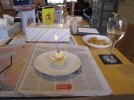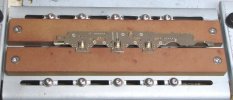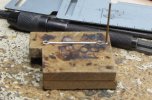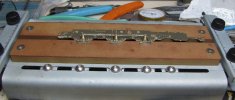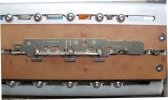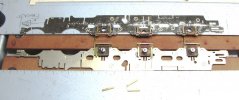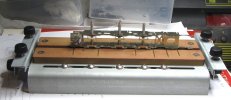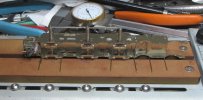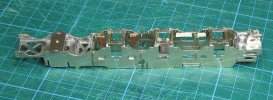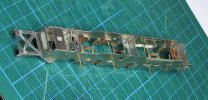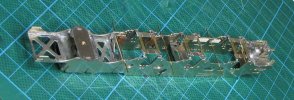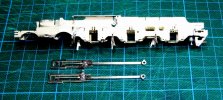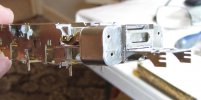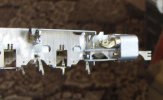Dave Holt
Western Thunderer
Yes, yes, I know; I haven't finished 45232, nor the repaired Jubilee, nor the Scot, Ivatt 2 tank or the Bradwell B1, but my mind has been turning to another Brassmasters Black 5 kit I have in stock.
Why another 5? Well, like some claim about Western Panniers, you just can't have too many Black 5s.
Perhaps inevitably for such a large class of locos, there was considerable variation between batches and even individual locos, some differences being quite obvious - different valve gear types and top feed position, for example, whist others were less obvious - firebox length, coupled wheelbase, tender types, etc. So far, I've done a Caprotti, a standard short wheelbase with long firebox and front top feed, short con rods and long anchor links with a semi-welded tender and a "standard" long firebox type with long con rods and short anchor links with a fully welded tender.
As a subtle variation I now want one of the early Vulcan Foundry examples, originally built with a short firebox but later modified to take a long firebox (required some frame stretchers to be moved). I also wanted an example which had the frames modified to take the later spring hanger arrangement with spring links in tension (as fitted to the later Ivatt locos) but retaining the early cranked, plain Horwich style combination lever and short plain anchor links. A fully rivetted tender is also wanted.
Browsing various literature, I came up with loco 45026, which was shedded at Wigan Springs Branch in the mid 1950s. However, photos of this loco seem quite rare and, until today, I couldn't determine the bolt pattern on the front drop portion of the running plate. The kit provide four quite different versions. This bolt pattern seems to have changed over the years on many locos and the preceding loco 45025 (preserved?) has had a different arrangement of bolts since new. However, today, I found a photo of 45026 on ebay, taken later than my period, but clearly showing that it had retained the bolt pattern it had when new.
Not totally conclusive, but good enough for me.
Construction probably won't start straight away, but at least I now have all the various optional details sorted out.
Dave.
Why another 5? Well, like some claim about Western Panniers, you just can't have too many Black 5s.
Perhaps inevitably for such a large class of locos, there was considerable variation between batches and even individual locos, some differences being quite obvious - different valve gear types and top feed position, for example, whist others were less obvious - firebox length, coupled wheelbase, tender types, etc. So far, I've done a Caprotti, a standard short wheelbase with long firebox and front top feed, short con rods and long anchor links with a semi-welded tender and a "standard" long firebox type with long con rods and short anchor links with a fully welded tender.
As a subtle variation I now want one of the early Vulcan Foundry examples, originally built with a short firebox but later modified to take a long firebox (required some frame stretchers to be moved). I also wanted an example which had the frames modified to take the later spring hanger arrangement with spring links in tension (as fitted to the later Ivatt locos) but retaining the early cranked, plain Horwich style combination lever and short plain anchor links. A fully rivetted tender is also wanted.
Browsing various literature, I came up with loco 45026, which was shedded at Wigan Springs Branch in the mid 1950s. However, photos of this loco seem quite rare and, until today, I couldn't determine the bolt pattern on the front drop portion of the running plate. The kit provide four quite different versions. This bolt pattern seems to have changed over the years on many locos and the preceding loco 45025 (preserved?) has had a different arrangement of bolts since new. However, today, I found a photo of 45026 on ebay, taken later than my period, but clearly showing that it had retained the bolt pattern it had when new.
Not totally conclusive, but good enough for me.
Construction probably won't start straight away, but at least I now have all the various optional details sorted out.
Dave.

